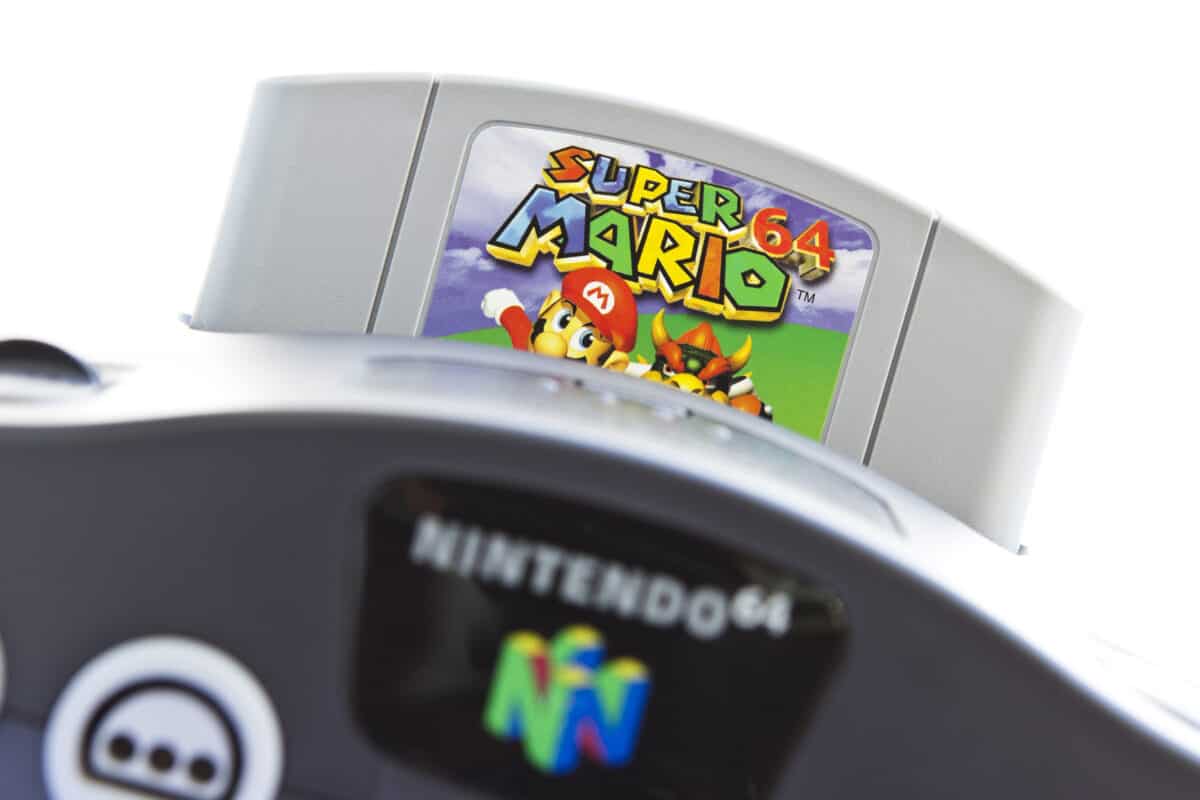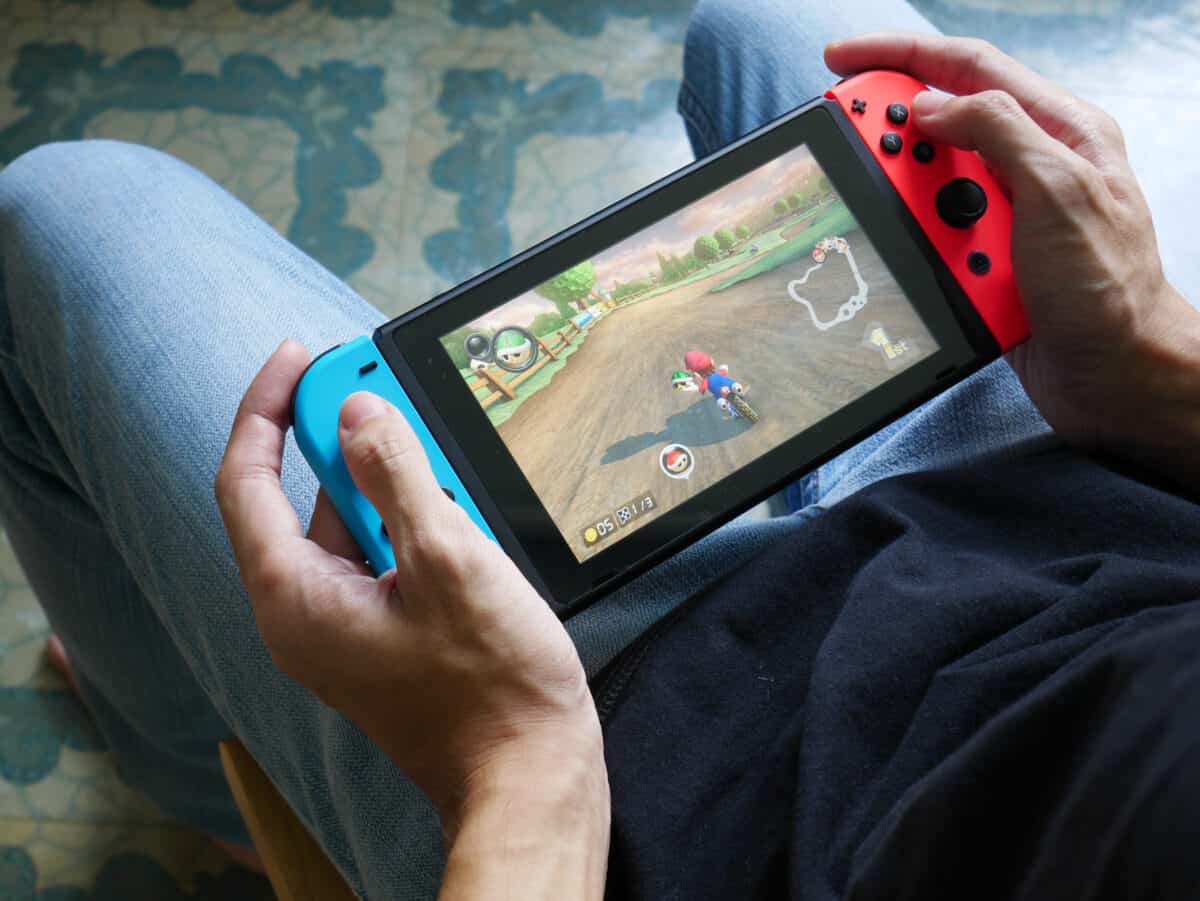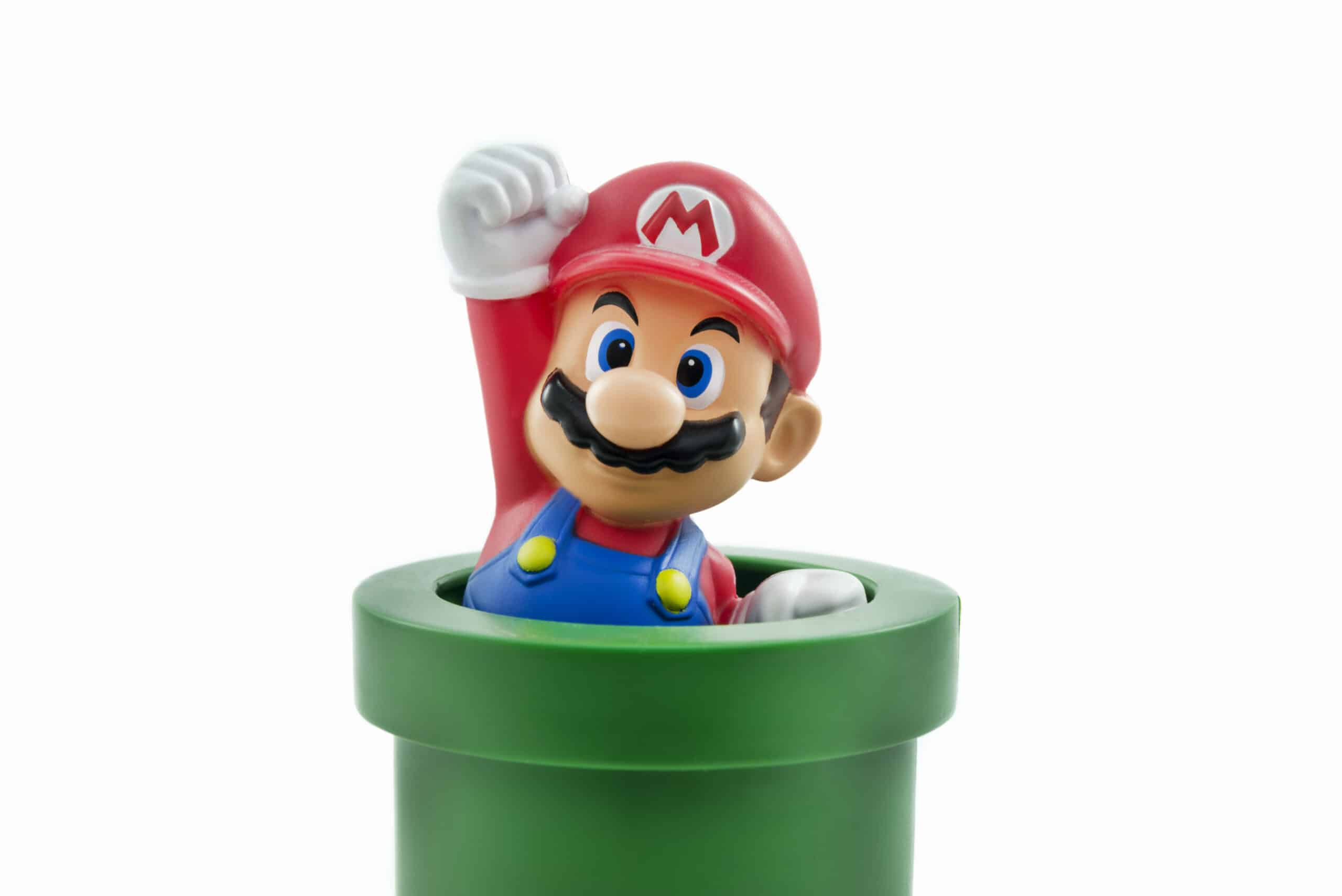5 Facts About Super Mario Brothers
- Super Mario Brothers is the fifth best-selling video game franchise of all time.
- The titular character, Mario, first appeared in the Donkey Kong arcade game.
- The first Super Mario Brothers game was released in 1985.
- Mario has sold over 300,000,000 copies worldwide when including spin-off sales.
- Mario popularized the phrase, “Your princess is in another castle.”
What is Super Mario Brothers?
Defining the Super Mario Series
Super Mario Brothers, more commonly referred to as simply the “Mario franchise,” is a platformer game developed by Nintendo. It stars the titular character, Mario Mario (yes, his first and last name are both Mario), and his brother, Luigi Mario, as they rescue the Princess of the Mushroom Kingdom, Peach, from the series villain, Bowser.
The game started as a 2D scroller, one of Nintendo’s premier titles for their Famicom Disk System and Nintendo Entertainment System. Mario first appeared as the hero of Nintendo’s Donkey Kong and the final boss of the sequel to Donkey Kong. In the standalone Mario series, Mario has graduated from the hero of someone else’s story to the hero of his own story.
Quick Facts
- Creator (person)
- Shigeru Miyamoto
- Release Date
- 13/09/1985
- Original price
- $25
- Operating System
- Famicom Disk System / Nintendo Entertainment System
- Developed By (company)
- Nintendo EAD
Mario then appeared in Shigeru Miyamoto and Takashi Tezuka’s arcade game Mario Bros., which featured Mario and Luigi, his brother, as dual heroes. Super Mario Bros. successfully attempted to bring Mario from the arcade to the home. Miyamoto and Tezuka partnered with Nintendo to bring Mario’s adventures to the Famicom Disk System and its western version, the Nintendo Entertainment System.
Super Mario Bros. nailed down a lot of classic Mario tropes that players are familiar with, such as the goombas, Koopa Troopas, Peach, Bowser, and other supporting characters. While more characters would be added to the roster as the series progressed, these figurehead characters have made a compelling roster to follow. The original Super Mario Bros. game also established the first three power-ups: the fire flower, Super Mushroom, and invincibility star.
The game would achieve commercial and critical success, propelling it to the fifth most popular game series of all time, regarding game sales. To date, there are more than twenty games in the Super Mario franchise, including several spin-offs and premier titles.
What is the Setting of Super Mario?
Super Mario takes place in the fictional Mushroom Kingdom, where Princess Peach resides as the reigning monarch. The games’ plots are straightforward and typically revolve around Mario, Luigi, and other cast members running and jumping through themed levels to rescue Princess Peach from the series antagonist, Bowser.
The original Super Mario game uses a system of eight worlds divided into four levels. The fourth level of each world is a castle where the player will have a showdown with Bowser or one of his minions to free Princess Peach. However, after each successive battle, the player discovers their princess is in another castle.
How to Use Super Mario Brothers
Super Mario is primarily a platformer game, meaning the players will interact with the game world by running and jumping across platforms and enemies to reach the goal of each level. Some levels may feature an auto-scroll where the screen automatically moves across the level and doesn’t allow for the player to move backward through the level or think as deeply about the moves they’re making as they progress through the level.
Additionally, games like Mario Kart, Mario Tennis, and Mario Strikers are sports spin-offs that do not use the traditional platforming mechanics of the core Mario games. There are many options for just about any playstyle within the Mario franchise since the game and spin-offs provide a comprehensive selection of game mechanics to choose from.
How to Learn Super Mario Brothers
Learning to play the Super Mario Brothers games is generally a product of repetition. The games each feature different mechanics and themes that make them stand out amongst the other games, so there’s no one way to learn the game.
Additionally, though a mechanic might be the ideal method of dealing with a particular problem, that doesn’t mean everyone will be able to execute the strategies. For example, many speedrunning tactics might provide a more economical time advantage. Still, they’re often frame-perfect strategies that require superior knowledge of game programming and how to abuse certain aspects of the code.
Super Mario Brothers vs. Sonic the Hedgehog
Mario and Sonic have been rivals since the outset. Both games feature platforming adventures, though they have notable differences. Mario games are much less focused on in-game momentum than Sonic games. Sonic games routinely feature puzzles that require the player to reach a certain movement speed in-game to crack a puzzle, while Mario games tend towards puzzles that require the player to hit buttons or kill enemies in a specific order.
Super Mario Brothers Release History
Super Mario games have been released relatively regularly since the mid-1980s. Typically, the game sees a release at least every few years. In addition, releases may be spin-offs or upgraded remasters of older games. Here are all the mainline Mario games in order.
Super Mario Bros. (1985)
This game is where the legend begins. It’s the first mainline entry into the Super Mario series. Here the game’s core mechanics and tropes were established as the developers sought to bring the Super Mario series from the arcade to the home.
Super Mario Bros.: The Lost Levels (1986)
Super Mario Bros.: The Lost Levels is actually Super Mario Bros. 2. The original game was released in Japan but never made it to the West due to its profound difficulty increase from the original Super Mario Bros. Nintendo America didn’t want Super Mario Bros to be marketed as a game with incredible difficulty. So, they initially passed on releasing it as a game for the series in the West. However, interest in the game grew, and it was eventually released as Super Mario Bros.: The Lost Levels.
Super Mario Bros. 2 (1988)
Super Mario Bros. 2 in the U.S. was released under the title, Super Mario USA, in Japan after first being released as a standalone title, Yume Kojo: Doki Doki Panic.
One of the defining and unique aspects of Super Mario Bros. 2 is that the game features four player characters, Mario, Luigi, Princess Peach, and Toad. Each character features defined character movements that set them apart from the other characters in single-player. For example, Princess Peach can float for a short period. It also featured a life meter that allowed players to be hit four times before dying, compared to the one to two times a player could be hit in previous iterations.
Super Mario Bros. 3 (1988)
Super Mario Bros. 3 slightly deviated from the basic format by dividing the game’s eight worlds into six to ten levels instead of the usual four. The levels are also not in a linear order like in previous games. The player can occasionally skip levels or play the game out of order without exploiting glitches or secrets.
Super Mario Land (1989)
Super Mario Land takes the player out of the usual Mushroom Kingdom and over to the world of Sarasaland, where he pursues the kidnapped Princess Daisy. Super Mario Land features a whole host of new game mechanics, including two Gradius-style shooter segments.
Super Mario World (1990)
Super Mario World introduced the series’ favorite dinosaur, Yoshi, who can eat enemies and gain special abilities from eating the shells of Koopa Troopas. The goal of this game is for Mario or Luigi to reach the goalpost at the end of each level as he progresses through each world to save Princess Toadstool.

Super Mario Land 2: 6 Golden Coins (1992)
Super Mario Land 2: 6 Golden Coins is a sequel to Super Mario Land, where the player takes control of Mario, who is on a quest to liberate his personal island from his rival, Wario. This game also marks the first debut of Wario, who would become a prominent figure in the extended Mario universe.
Super Mario World 2: Yoshi’s Island (1995)
Super Mario World 2: Yoshi’s Island features baby Mario who has been separated from baby Luigi by the evil bad guy, Kamek. It’s a mainline series platformer with all the core tropes in the Mario franchise.
Super Mario 64 (1996)
Super Mario 64 is the first game in the Super Mario Bros. series to feature 3D gameplay. In addition, the game features a 3D rendition of the traditional Super Mario art style. The story follows Mario, who is on a quest to retrieve the Power Stars that protect Princess Peach’s castle. The Stars have been scattered throughout a 3D open world, and retrieving enough of them unlocks the court for Mario to have a showdown with Bowser for Princess Peach’s safety.
Super Mario Sunshine (2002)
Super Mario Sunshine takes place on the tropical Isle, Delfino. The cast is plagued by a vandal who looks like Mario; this “Shadow Mario” leaves the island a wreck. Mario is tasked with cleaning up after his evil twin while rescuing Princess Peach from Shadow Mario.
New Super Mario Bros. (2006)
New Super Mario Bros. was a game developed for the Nintendo DS. It was released in 2006 and started a new sub-series of the Super Mario Bros. franchise, distinct from the previous sub-series like Super Mario Land and Super Mario World.
The game was widely regarded as being faithful to the original Mario games. Still, critics cited a low difficulty level and too much similarity between it and other Mario games in their critiques. However, the game’s overall critical reception was excellent and with primarily positive reviews.
Super Mario Galaxy (2007)
Super Mario Galaxy takes the game to the universe level by having Bowser now threatening the whole universe. Mario must follow him through the universe and collect Power Stars while rescuing Princess Peach and the entire universe from Bowser’s influence.
New Super Mario Bros. Wii (2009)
New Super Mario Bros. Wii was a perfect opportunity for the developer, Shigeru Miyamoto, to explore the cooperative multiplayer option in Super Mario. The series hadn’t seen any attempt at multiplayer innovation since Super Mario 64. It had always been Miyamoto’s dream to engineer a cooperative multiplayer Mario game.
Super Mario Galaxy 2 (2010)
Once again, the Koopa King Bowser has imprisoned Princess Peach in outer space, and Mario is tasked with retrieving the Princess safely from Bowser’s clutches. Mario must travel across galaxies to collect the Power Stars so he can travel to the center of the universe to save Princess Peach.
Super Mario 3D Land (2011)
Super Mario 3D Land is unique amongst Super Mario games as it was the first game where aspects of both 2D and 3D Super Mario games were used in one concurrent game. As a result, the game has 2.5D and 3D levels in one game and features many fan-favorite power-ups from previous games.
New Super Mario Bros. 2 (2012)
New Super Mario Bros. 2 was a 2D side-scroller that allowed the Mario series to return to its roots as a 2D side-scroller without sacrificing many of the unique and game-enhancing mechanics that came with 3D rendered graphics.
New Super Mario Bros. U (2012)
New Super Mario Bros. U was another 2D side-scroller released for the Nintendo Wii U. It also features a downloadable expansion, New Super Luigi U, to the game for the “Year of Luigi” campaign.
Super Mario 3D World (2013)
Super Mario 3D World is a sequel to Super Mario 3D Land for the 3DS. The game features 3D gameplay like that seen in 3D Land and the Super Bell, which allows the player to transform into a cat that can climb walls and use a scratch attack against enemies.
Super Mario Maker (2015)
Super Mario Maker is a 2D side-scrolling game creation platform released for the Wii U. The game allowed players to create their own Mario levels using predetermined assets. Unfortunately, players had to be able to beat their levels before they could be published, making it challenging to publish levels that would be unplayable.
Super Mario Run (2016)
Super Mario Run is a mobile platformer game where Mario and other characters from the series run across the screen, and the player makes them jump to collect coins and avoid obstacles. It was initially released for iOS and later for Android.
Super Mario Odyssey (2017)
Super Mario Odyssey brings Mario into our world as he explores our world with the help of a new ally, Cappy. Cappy is a sentient hat that allows Mario to take control of other creatures and objects to use their powers to help him make it through each level to rescue Princess Peach.
Super Mario Maker 2 (2019)
Super Mario Maker 2 is the sequel to Super Mario Maker. The game is one of the best-selling Switch games of all time, having sold over 7.89 million copies.

Super Mario 3D World + Bowser’s Fury (2021)
This title is a re-release of Super Mario 3D World and an additional Bowser’s Fury game bundle. The game follows Mario as he travels around Lake Lapcat, repelling a black sludge infecting the world and controlling Bowser, making him into a demonic creature that appears at night to try and destroy the world of Lake Lapcat.
| Original Release Date | September 13th, 1985 |
| Latest Release Date | February 12th, 2021 |
| Original Release Price | $25 USD |
| Original Release Platform | Famicom Disk System/Nintendo Entertainment System |
| Original Release Title | Super Mario Bros. |
| Most Recent Release Title | Super Mario Bros. 3D World + Bowser’s Fury |
Final Thoughts
Super Mario Bros. is a pillar of the gaming community and a core component of making video games into the platform we know and love today. There are over twenty games in the Super Mario Bros. franchise for you to sample. As some other franchises may have, the game hasn’t abandoned the old days of 2D side-scrollers. So, there’s something fun for everyone in the Mario franchise.
Up Next…
Interested in reading about other exciting games? Click on the articles below:
- The History of Warcraft: This strategy game birthed one of the most popular MMORPGs on the planet. Find out about the game and its expansions here.
- The History of Final Fantasy: It is one of the most successful fantasy franchises on the globe. Find out about this game which continues to provide unique releases and even exists as an MMO.
- Zelda Through The Ages: Every Zelda Game In Order with Timeline, and More: Set in the fictional kingdom of Hyrule, this franchise has provided various releases one of which is the highest-rated game according to the Guinness Book of Records. Find out all you need to know about the game which inspired a generation of developers.
The image featured at the top of this post is ©iStock.com/Czgur.








